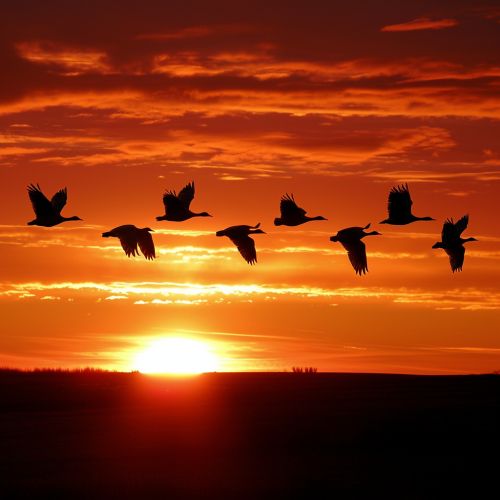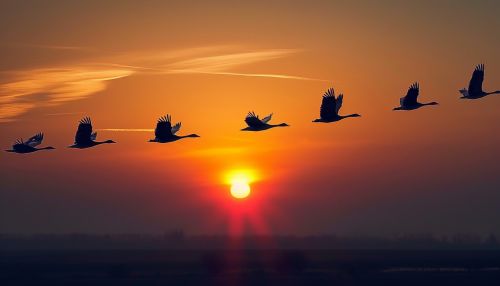Effects of Climate Change on Birds
Introduction
Climate change, defined as long-term shifts in temperatures and weather patterns, is a significant global challenge with wide-ranging impacts. One of the most affected groups are birds, whose phenology, distribution, and behavior have been significantly altered due to climate change. This article delves into the effects of climate change on birds, exploring the various ways in which these creatures are adapting, surviving, or succumbing to these changes.
Phenological Changes
Phenology, the study of periodic plant and animal life cycle events, has been greatly impacted by climate change. Birds, in particular, have shown significant shifts in their phenological events such as migration and breeding.


Migration
Bird migration, the regular seasonal movement of birds along an established route, has been greatly affected by climate change. Many species are now migrating earlier due to warmer temperatures, a phenomenon known as phenological mismatch. This can lead to a misalignment between the timing of bird migration and the availability of their food resources, which can negatively affect their survival and reproduction rates. For example, the pied flycatcher has been unable to adjust its migration timing, leading to decreased populations as their arrival no longer coincides with peak caterpillar abundance.
Breeding
Breeding patterns of birds have also been influenced by climate change. Warmer temperatures have led to earlier egg-laying in many species. However, similar to migration, this can lead to phenological mismatch if the chicks hatch when their food source is not at its peak. This has been observed in species such as the great tit, where earlier hatching due to warmer temperatures has not coincided with the peak abundance of their caterpillar prey.
Distribution Changes
Climate change has also led to changes in the distribution of bird species, affecting both their breeding and wintering ranges.
Breeding Range
Changes in temperature and precipitation patterns have led to shifts in the breeding ranges of many bird species. Warmer temperatures have allowed some species to expand their breeding ranges northwards. However, for others, increased temperatures have made their traditional breeding grounds unsuitable, leading to range contractions. For example, the golden plover, a species adapted to cooler climates, has seen a reduction in its breeding range due to increased temperatures.
Wintering Range
Wintering ranges of birds have also been affected by climate change. Warmer winters have allowed some bird species to shorten their migration distances and winter further north. However, changes in food availability due to climate change can also negatively impact species. For instance, the red knot relies on horseshoe crab eggs during its migration, but changes in the timing of the crab's reproduction due to warmer sea temperatures have led to a decrease in the red knot's population.
Behavioral Changes
In addition to phenological and distribution changes, birds have also exhibited behavioral changes in response to climate change. These include changes in feeding behavior and alterations in social structure.
Feeding Behavior
Changes in climate can affect the availability and abundance of food resources, leading to changes in bird feeding behavior. Some birds have adapted by broadening their diet, while others have changed their foraging behavior. For example, the black guillemot has shifted its diet from Arctic cod to invertebrates due to decreased sea ice.
Social Structure
Climate change can also impact the social structure of bird populations. Changes in resource availability can lead to increased competition, potentially altering social hierarchies within bird species. Additionally, changes in the timing of breeding can affect the social structure, as birds that breed earlier due to warmer temperatures may gain a competitive advantage.
Conclusion
Climate change has wide-ranging impacts on birds, affecting their phenology, distribution, and behavior. While some species have been able to adapt to these changes, others have seen declines in their populations. Understanding these impacts is crucial for developing effective conservation strategies to protect and preserve bird species in the face of ongoing climate change.
